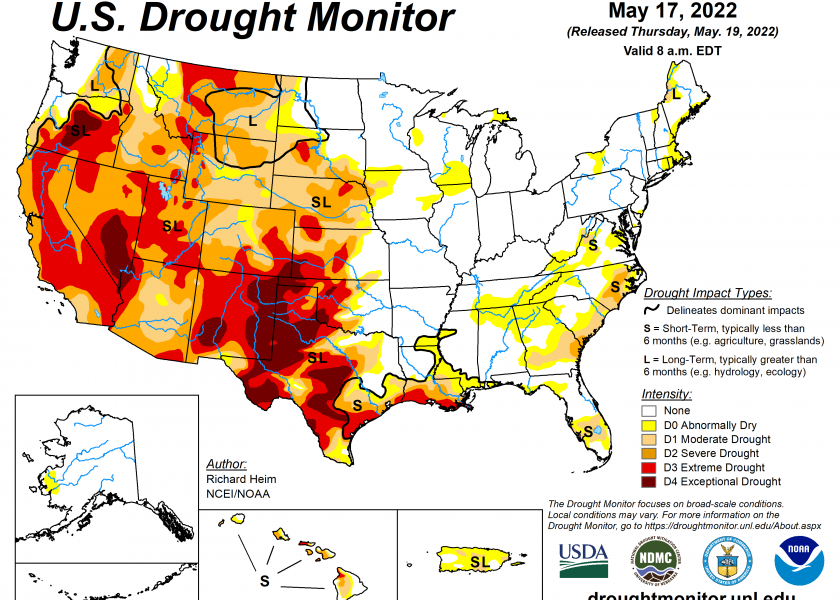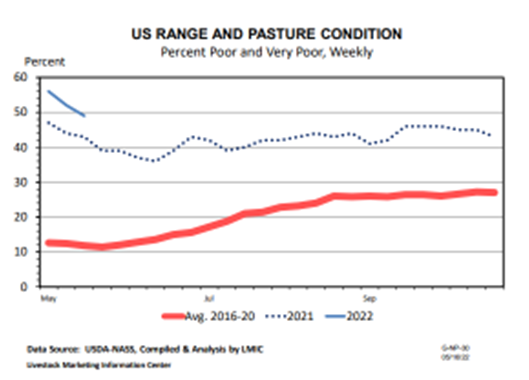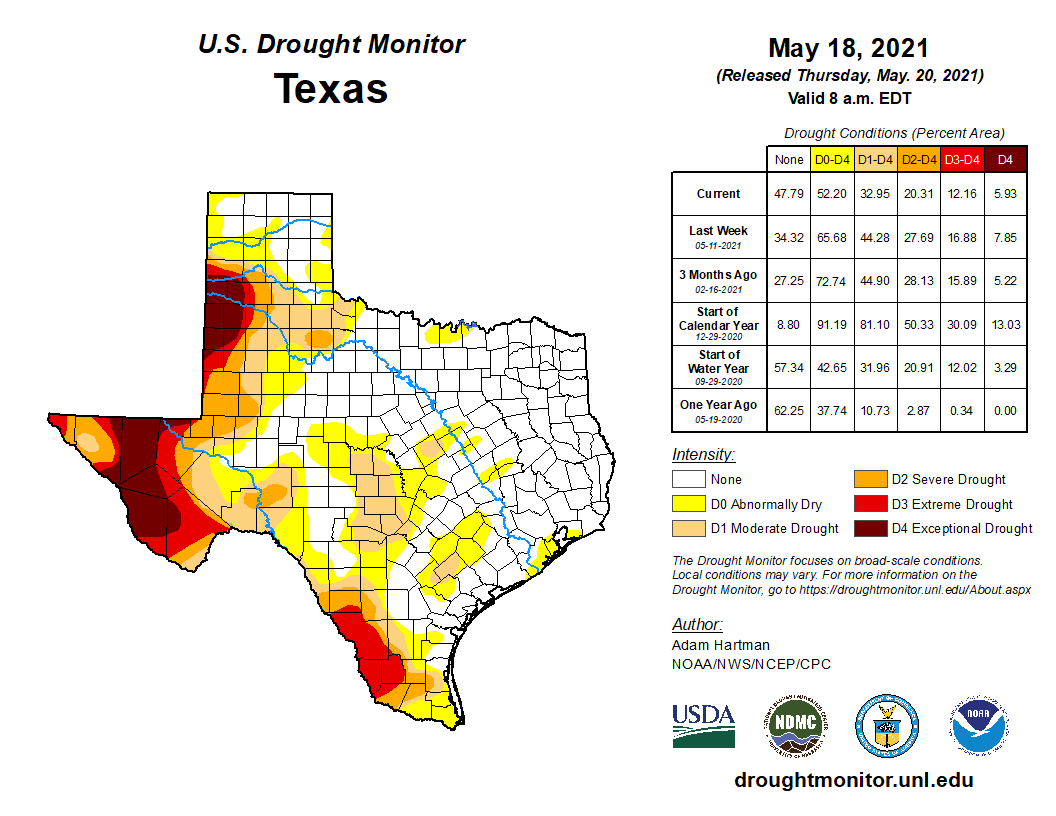Drought Lingers Over the West and Great Plains

American ranchers are facing a dry start to the summer grazing season. U.S. Pasture and Range conditions were rated 49% poor to very poor by USDA this week. That’s a 7% improvement over two weeks ago, but still behind the five-year average, which shows that about 12% of pasture conditions fell into the lowest two categories.

In the West, pasture and range conditions were rated 39% poor to very poor last week, which is slightly better than the overall U.S.
The Great Plains, however, started the season at 60% poor to very poor, but has seen improvement to 46% poor to very poor over the past two weeks. The 5-year average shows the Great Plains start the season at about 10% poor to very poor.
The Greta Plains states are where roughly 60% of the nation’s beef cows call home, which means roughly half of the nation’s cow herd is under the two harshest categories of drought conditions.
Improvement in pasture and range conditions have occurred over the past week, especially in the eastern region of the Great Plains. But the improvements were not experienced by all.
In the Kansas City, for instance, the Kansas City International Airport has recorded 13.51 inches of precipitation so far in 2022, which is about 1.11 inches above normal.
That contrasts with Amarillo, Tex., which has only received 1.5 inches of precipitation for all of 2022 through mid-May. Amarillo typically receives about 19 to 20 inches of rainfall annually. USDA's May 16 Crop Progress report listed 76% of Texas pasture and range conditions as poor to very poor. The maps below show the comparison of drought designations in Texas for 2022 and last year.









